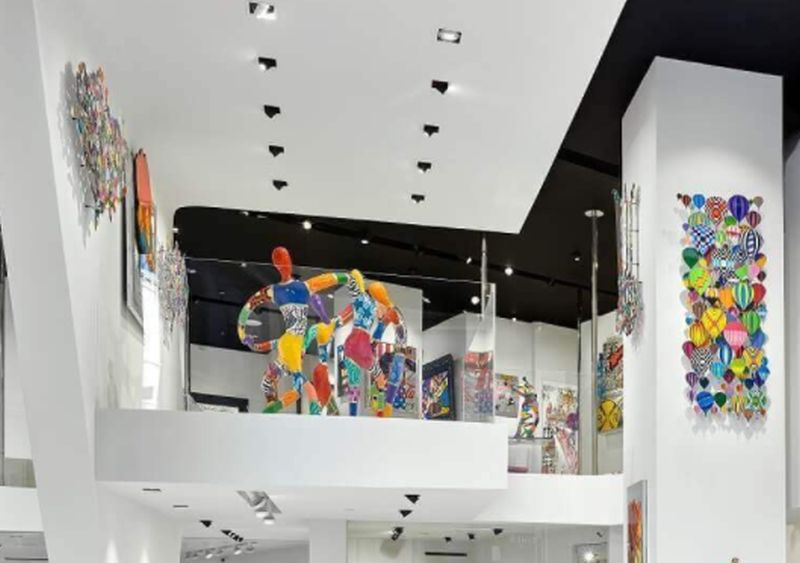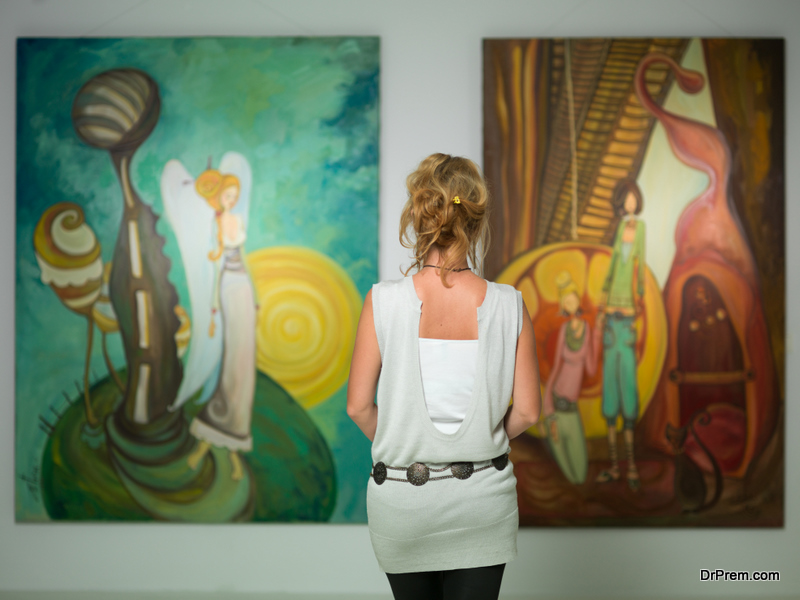Despite their obvious differences, these disciplines share many principles
Let’s begin by clarifying what type of design we are comparing art with here; the debate regarding the differences between Graphic Design vs. Fine Art is a well-established topic of discussion, but that isn’t what we will be discussing today.
Instead, we want to explore the similarities between the techniques used in the design of a physical or digital product, and the design of a piece of art.
Perhaps one of the easiest ways to conceptualize these similarities – and the differences – is in the area of digital product design. Websites, smartphone apps, and other pieces of software all rely on many of the same principles used in the creation of a piece of art.
1. Basic Similarities

Many types of art are created on a fixed form of media. Examples of this would be drawings and paintings, which are constrained by the dimensions of the media on which the artwork is being designed. Other types of art, such as sculpture, may not have inherent restrictions on the size of the eventual work.
Indeed, some sculptures are truly enormous – have a browse of Eden’s online art gallery, and you’ll see just what we mean! Even so, a degree of planning is required if such a sculpture is ever to be realized – this planning could easily be accurately described as being the design phase of the sculpture.
In much the same way, those digital products we mentioned earlier – websites, apps, and so forth – require fixed dimensions as well. You wouldn’t want to create a website with content spread so widely that it far exceeds the display resolution of the intended target device(s).
Therefore, we can state that the first and most obvious similarity between art and design is the use of space – and they both share similar goals too – to fill that space in the most effective way possible.
2. Similarities in Principles
Both art and design share numerous principles that are essential to the goals of the artist or designer. There are differences in the way many of these principles are implemented in art vs. design, which is the beauty of art; it inspires thought and provokes you to consider why a certain principle was used in the way that it was.
In the design world, many of those same principles are used out of necessity – for a purely functional purpose. Let’s investigate a few of the most important of these principles:
3. Proportion
Filling a space in the most effective way possible requires an understanding of proportion – producing a design for any type of product will involve several elements of varying dimensions. Likewise, artworks are filled with countless elements that interact with one another.
Artists may use proportion to define the relationships and composition of their elements through height, width, and depth, leading to dramatic effects on the level of realism, or how stylized the elements appear. Designers tend to use a more pragmatic approach, setting proportions purely for utilitarian means. Still, this use of proportion is more similar than it is different.
4. Color

Without question, color is one of the most important tools in the artist’s arsenal. Similarly, design makes enormous use of color too. But while artists have more or less free roam to use color as they please, designers are somewhat constrained in that their designs are usually intended to be visually appealing to as wide an audience as possible – color clash can be a valuable artistic technique, whereas it is universally abhorred amongst designers.
5. Scale
Scale is closely related to proportion and is used in similar ways in both art and design. By setting upper and lower bounds for the dimensions of elements used within a design or piece of artwork, it enables the person creating the work to more easily decide on an appropriate size for any new elements they introduce later.
Without scale, it is impossible to balance the elements of any artwork or design effectively.
In Conclusion
Art can play an important role in the design of many products and services – a webpage without imagery would be regarded as dull and lifeless, and would likely struggle to maintain the interest of the viewer.
Many would argue that several forms of modern design require little in the way of creative ability, and instead rely on consistent, repeatable processes that have proven real-world uses and benefits.
Designers do have artistic preferences, however – whether they realize it or not. These preferences shine through in every piece of work they produce, leading to a default aesthetic that can allow some to determine the designer of a particular item or product just as easily as many people can identify the artist behind a particular piece of artwork.
Once again – more similar, than different. Check out the fine art prints by Richard Stanley.
Article Submitted By Community Writer




